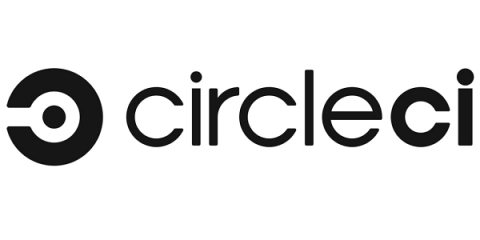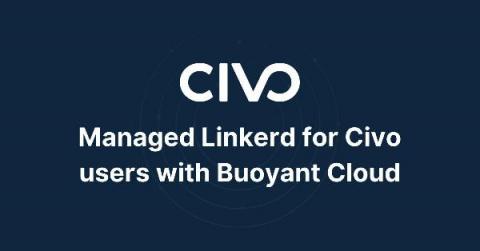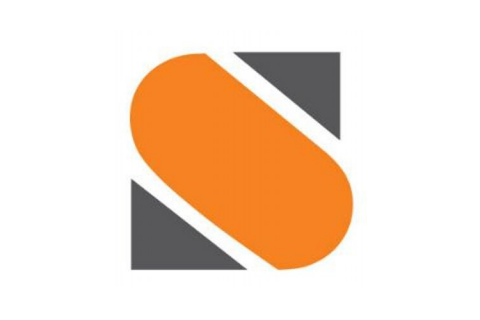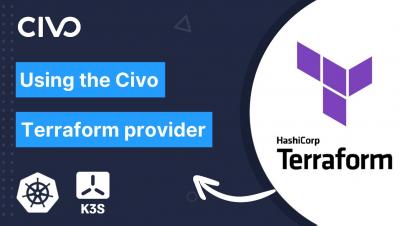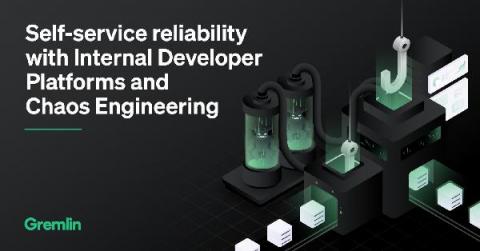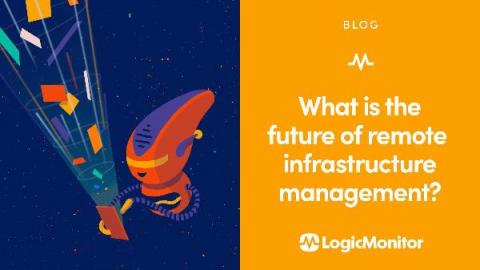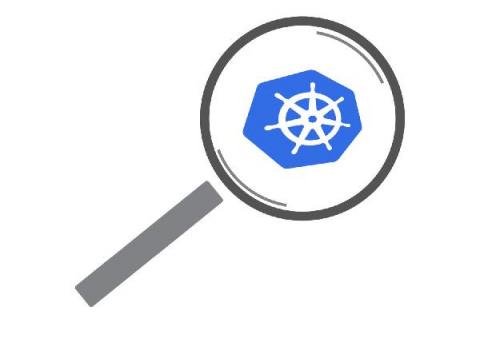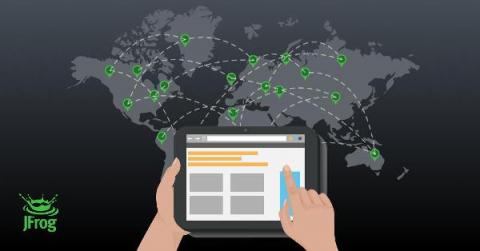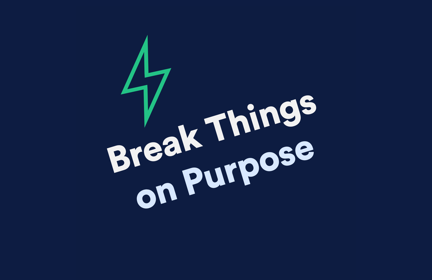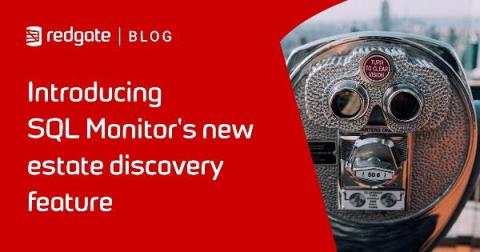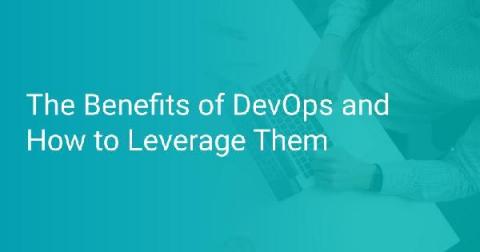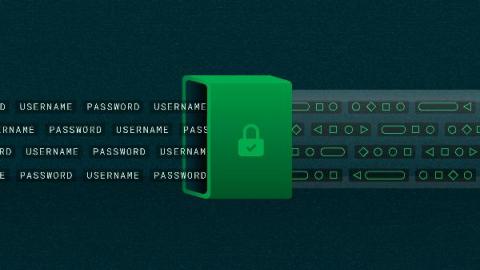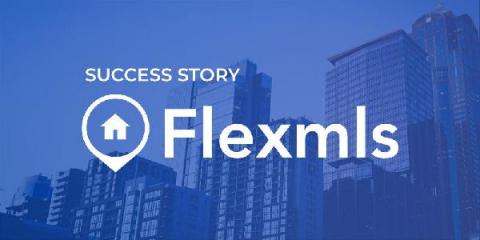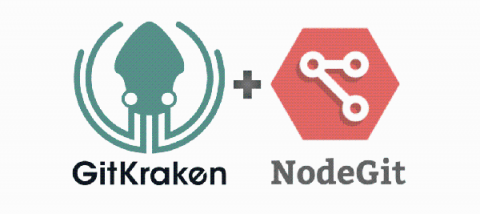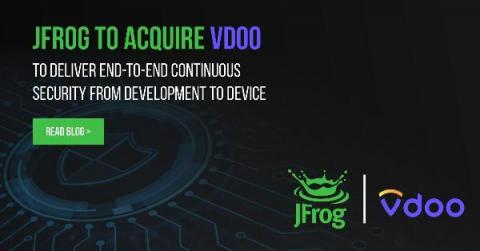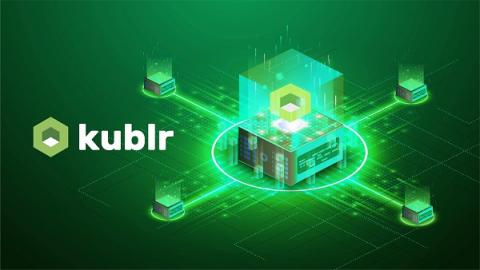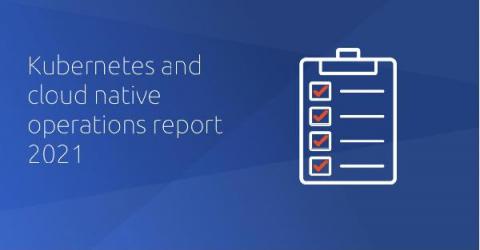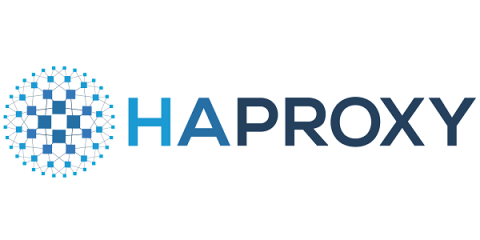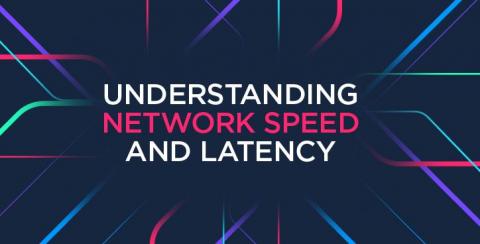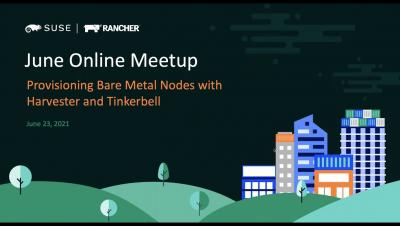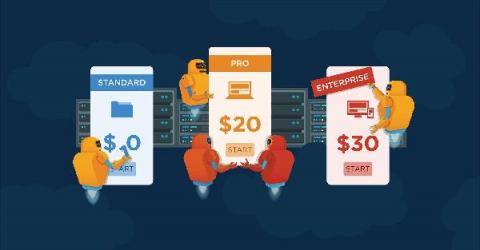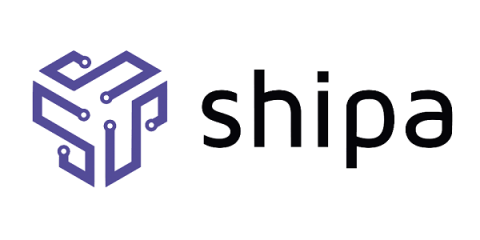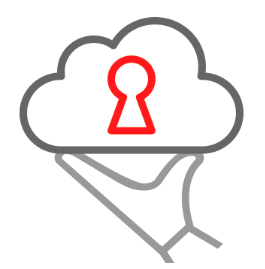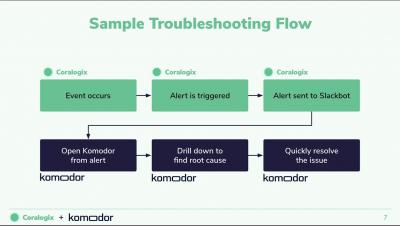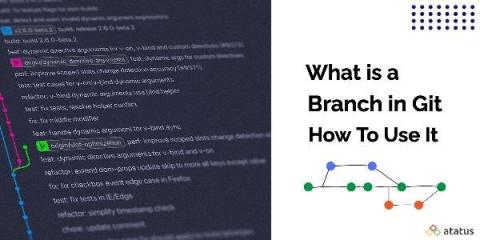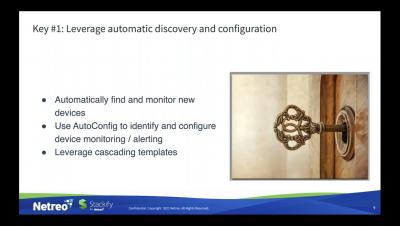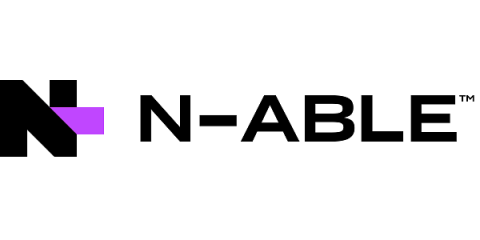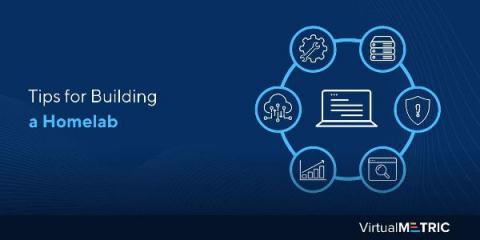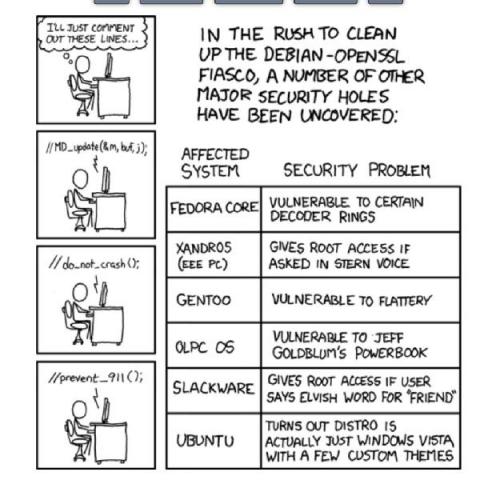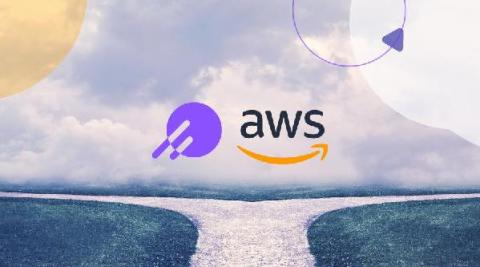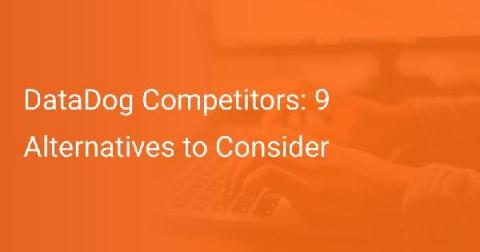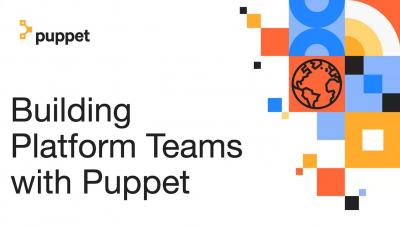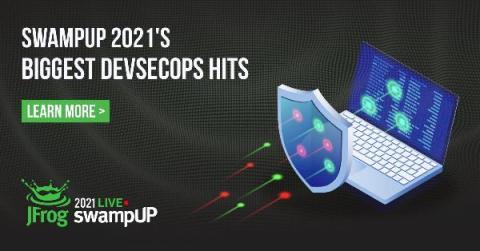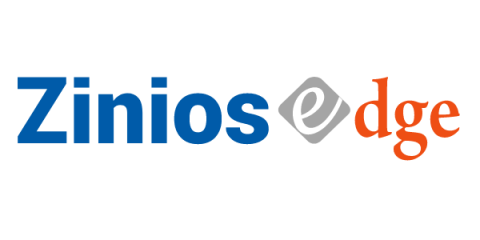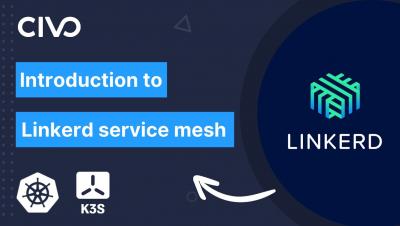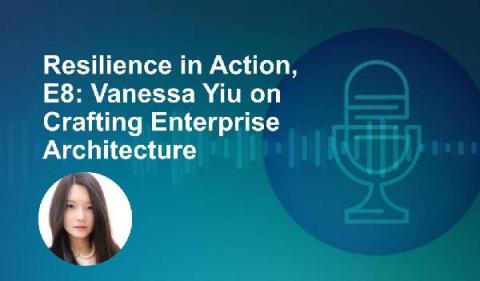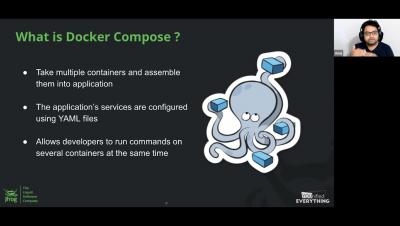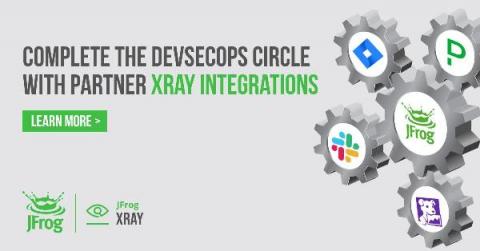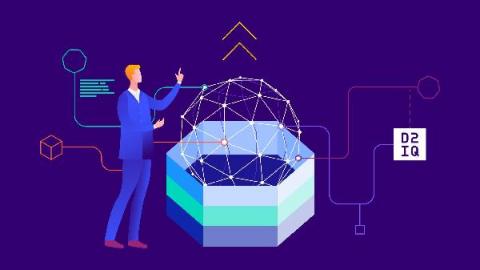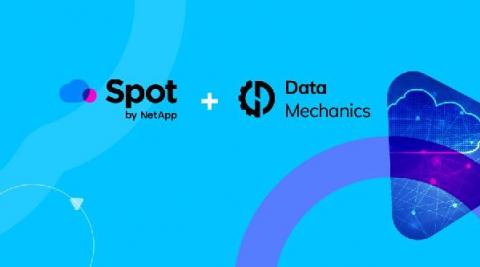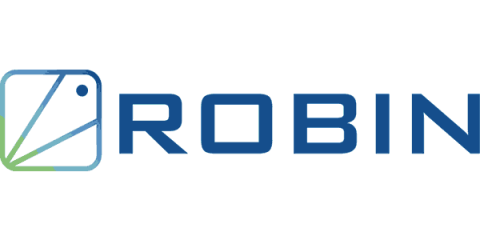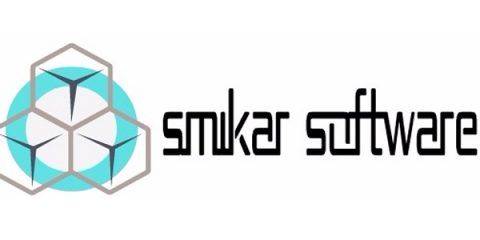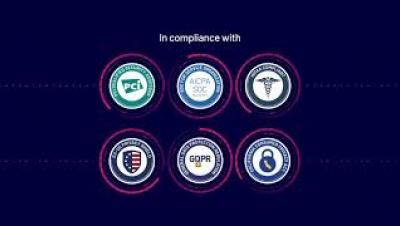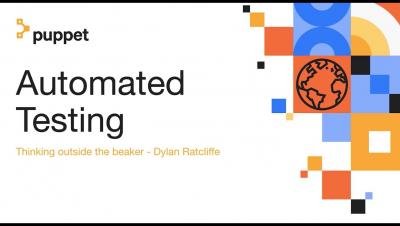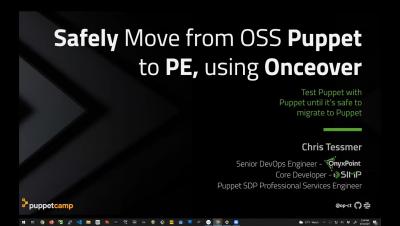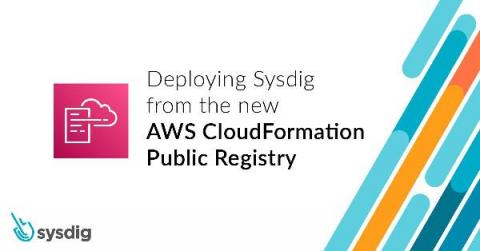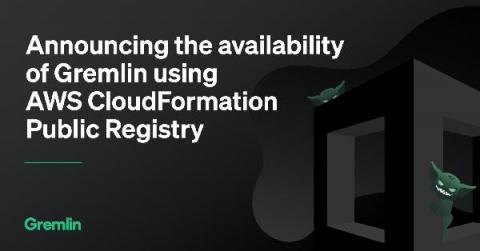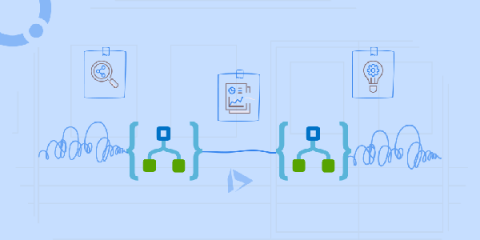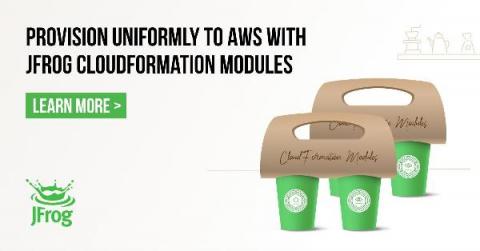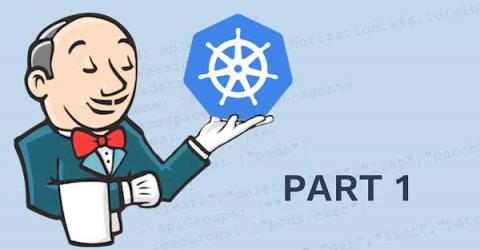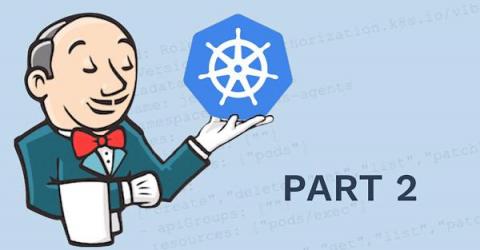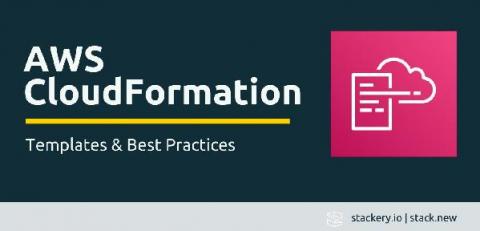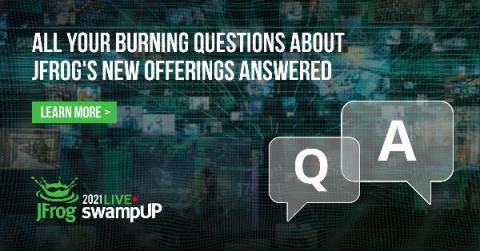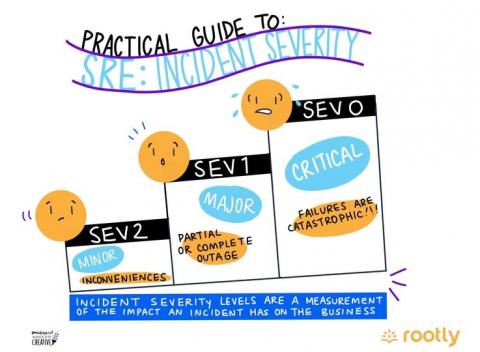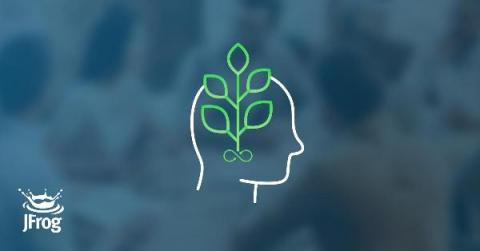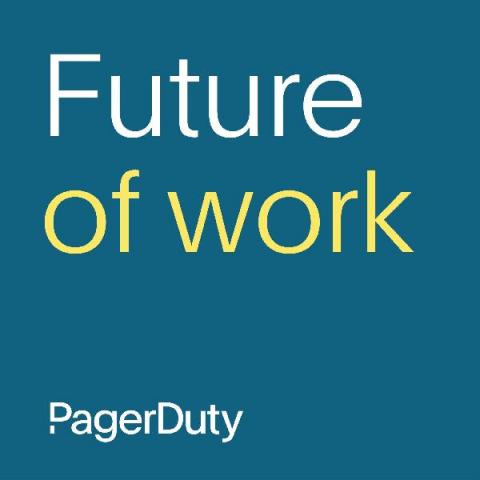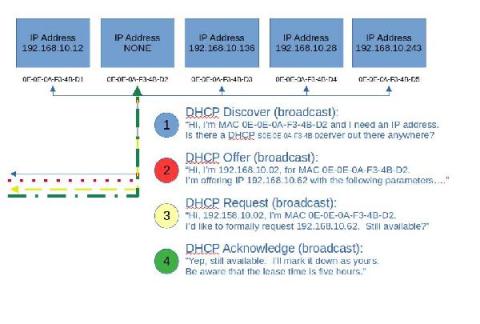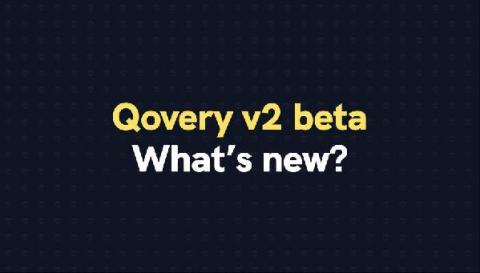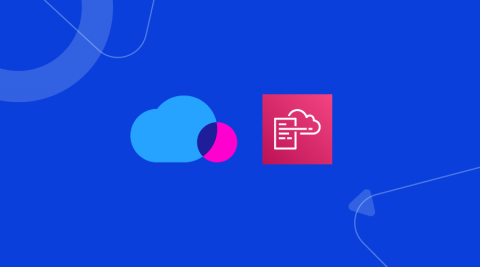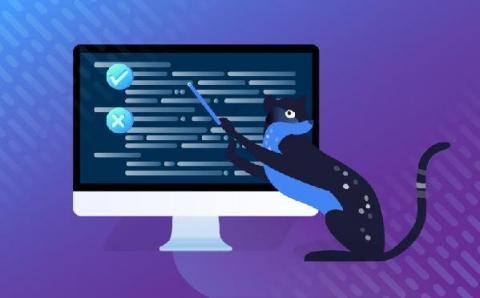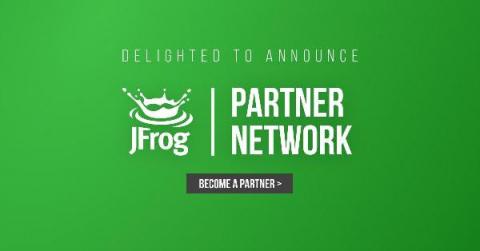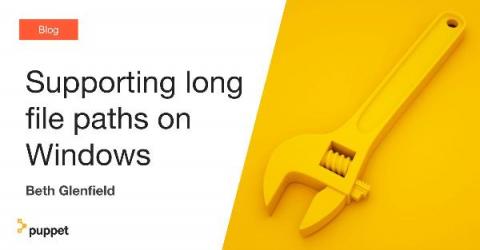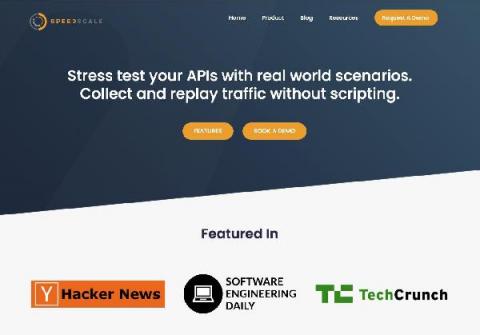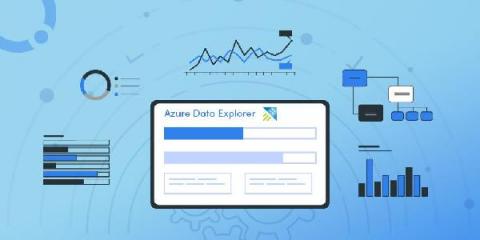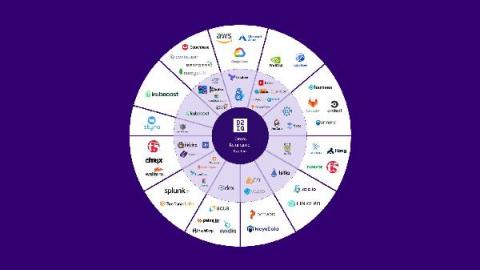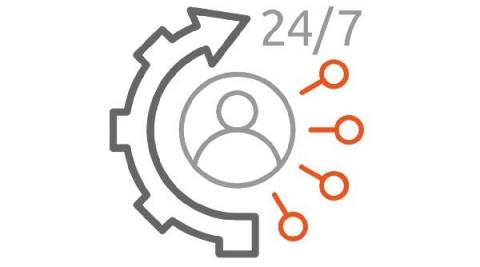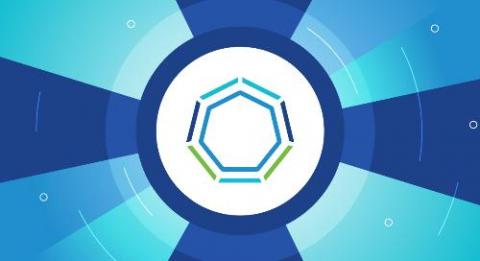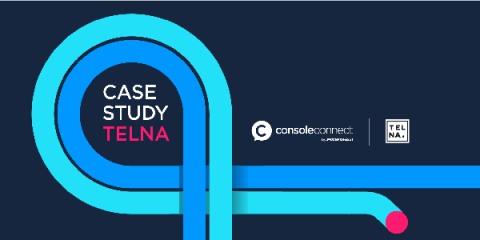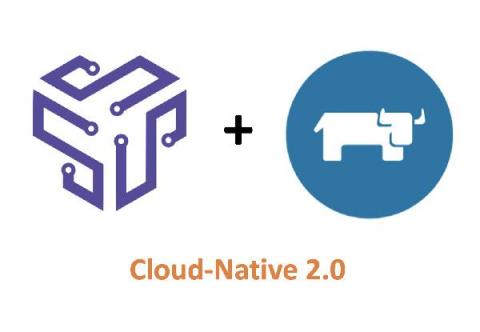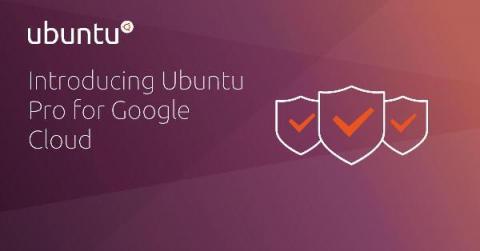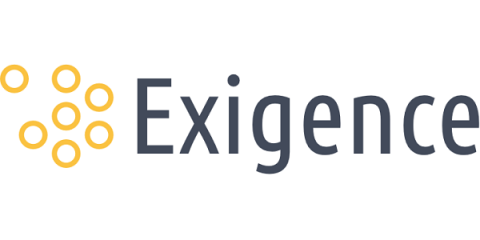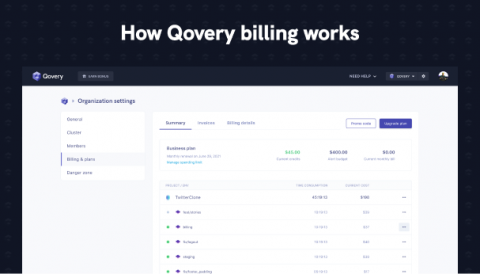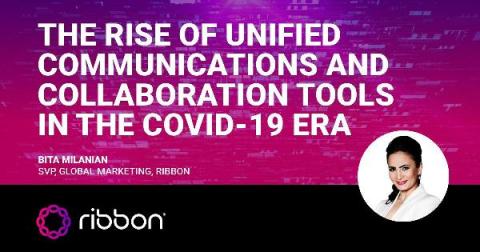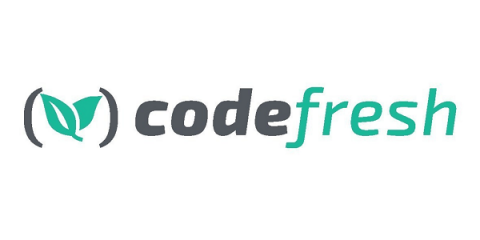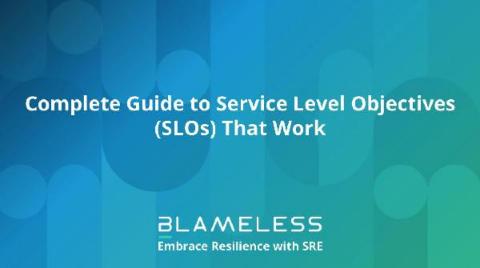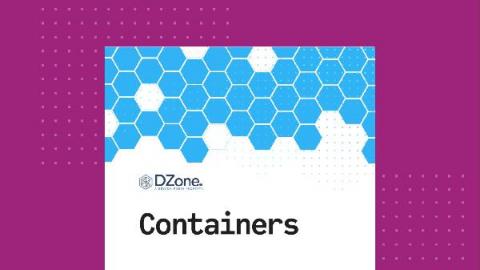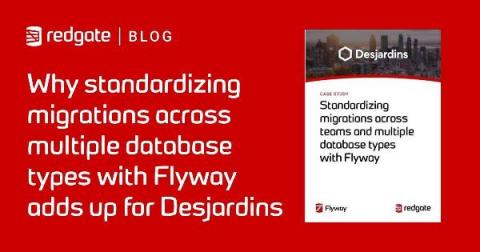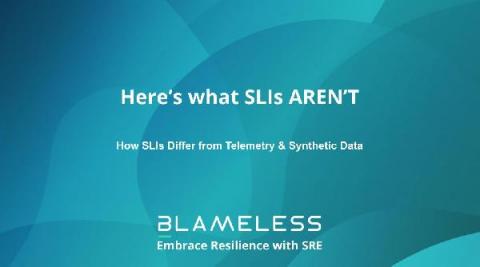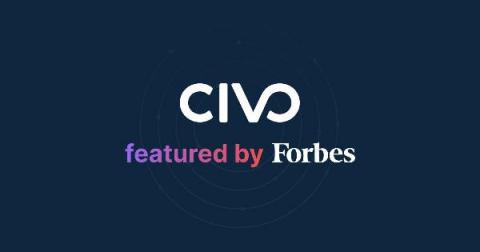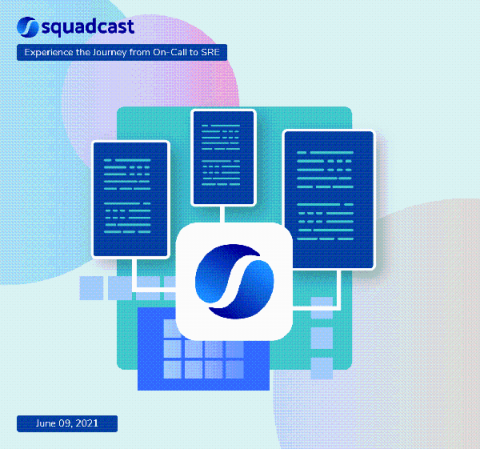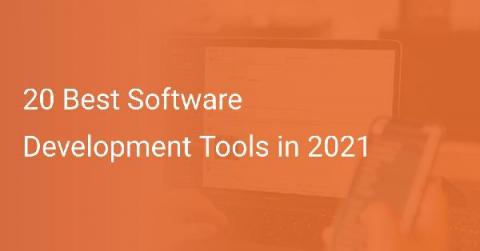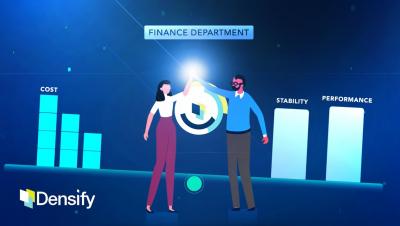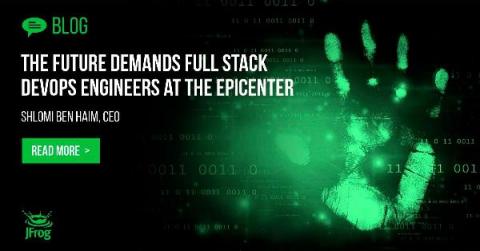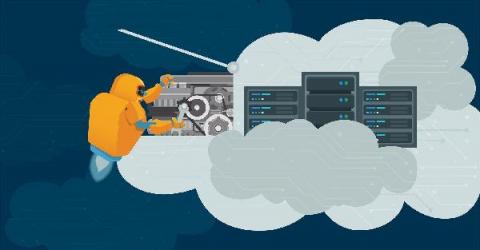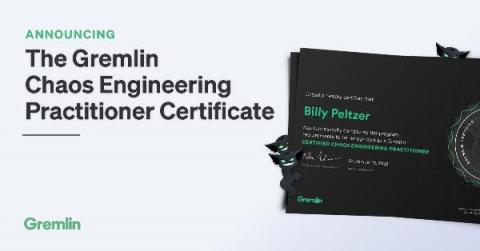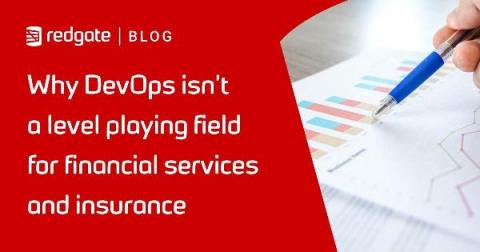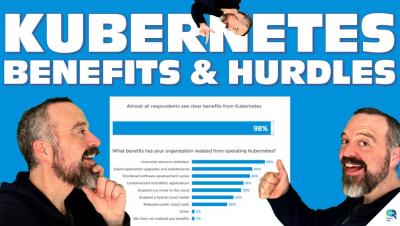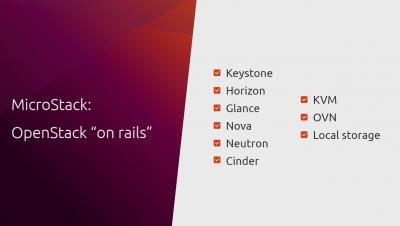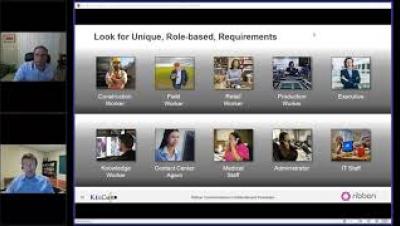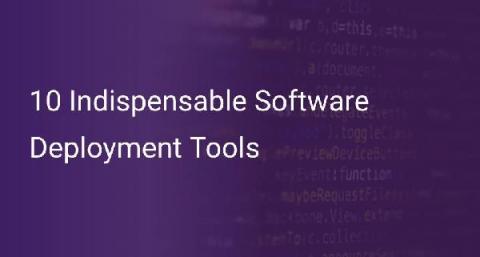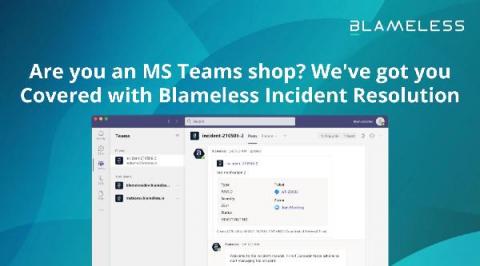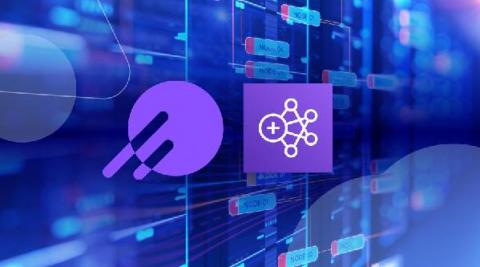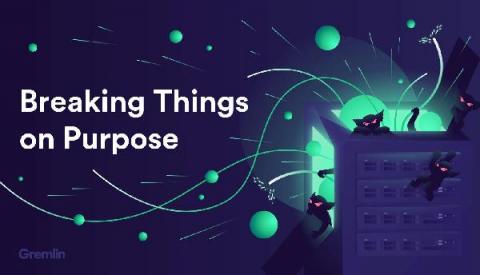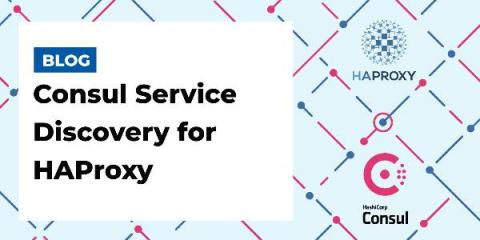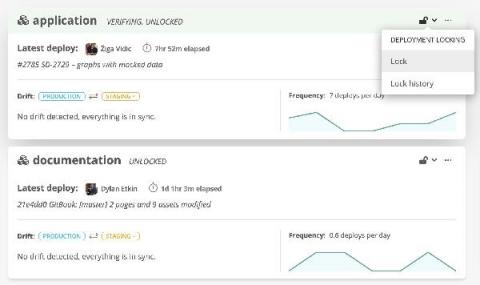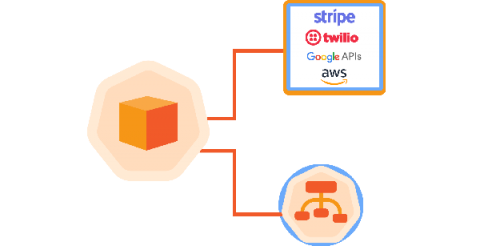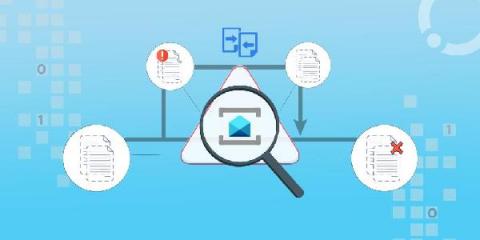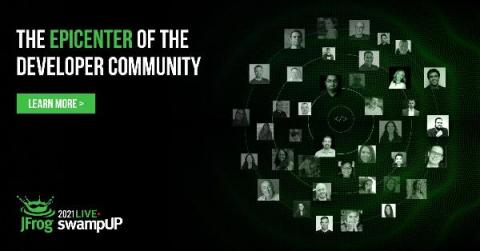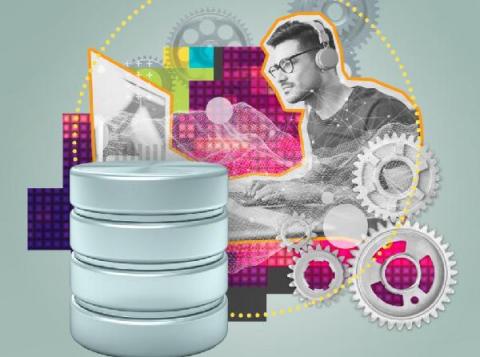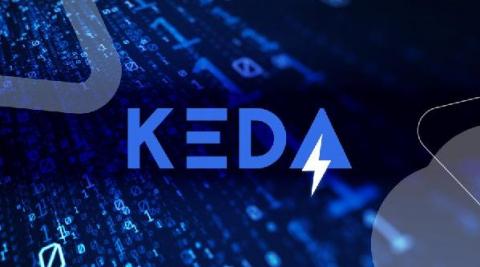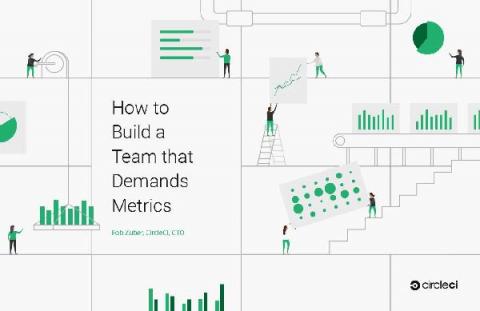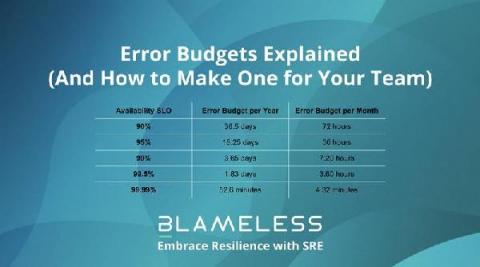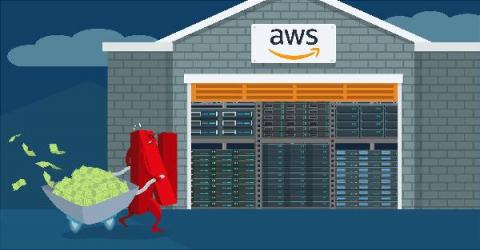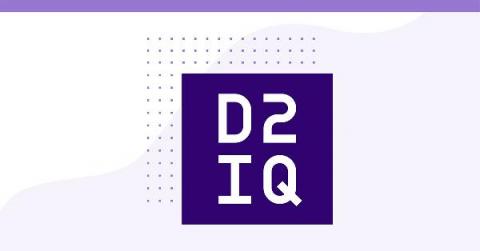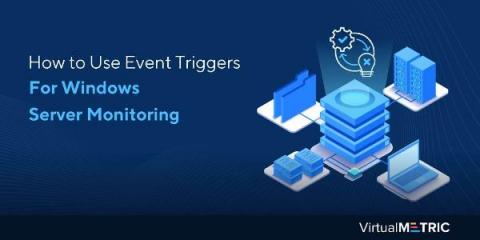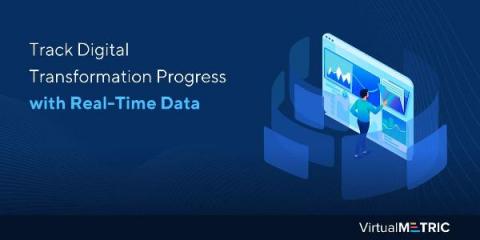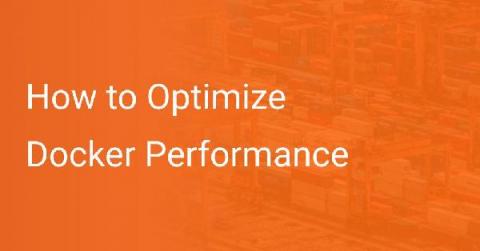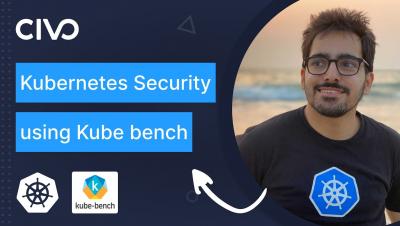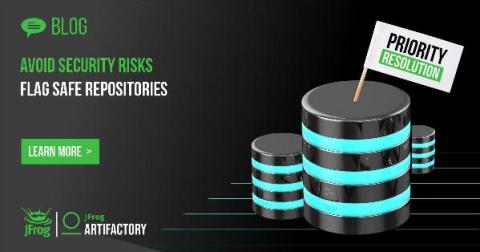Operations | Monitoring | ITSM | DevOps | Cloud
June 2021
6 Ways to Support a Remote DevOps Team
Managed Linkerd for Civo users with Buoyant Cloud
Our friends at Buoyant, creators of Linkerd, have just launched the public beta of Buoyant Cloud, the best way to run Linkerd in mission-critical environments. We're happy to announce that Civo users are eligible for $100 in free Buoyant Cloud credits. Read on to learn more!
StackStorm v3.5.0 Released
June 29, 2021 by Amanda McGuinness of Ammeon Solutions and Marcel Weinberg It has been nearly 4 months since our previous v3.4.0 release and we’re super excited about this one! With Ubuntu 16.04 reaching end-of-life, we are pleased to announce support for Ubuntu 20.04 (Focal Fossa). We have also included lots of performance improvements in v3.5.0. See below, for further information on what’s included in the release.
Manage GKE services with Cloud Operations
CircleCI Continuous Updates | Server 3.1
Foundations: What Is Dynamic Configuration?
Using the Civo Terraform provider
Modern App Deployments: How to use NGINX and JFrog to Automate your Blue/Green deployments
The New Developer Experience at Okta
DevSecOps is a practice. Make it visible
Self-service reliability with Internal Developer Platforms and Chaos Engineering
Get started with Gremlin's Chaos Engineering tools to safely, securely, and simply inject failure into your systems to find weaknesses before they cause customer-facing issues. Up until the early 2000s, developers and Ops (at the time IT) had separate and often competing objectives, separate department leadership, separate key performance indicators by which they were judged, and often worked on separate floors or even separate buildings.
How to Download Kublr
What Is the Future of Remote Infrastructure Management?
Once upon a time, the prospect of an organization letting another organization manage its IT infrastructure seemed either inconceivable or incredibly dangerous. It was like someone handing their house keys to a stranger. Times have changed. Remote Infrastructure Management (RIM) — when Company X lets Company Y, or a piece of software, monitor and manage its infrastructure from a remote location — has become the standard in some industries.
FierceTelecom FIBER TECHNOLOGIES STRATEGIES
Desktop K8S in 2021
For this article we’ll dig into some of the options for Local Kubernetes Clusters if you are developing on a Mac. When doing microservices development, eventually you will want to start to test integrated services together. And there are several options available to run these tests: Tests were conducted on a 2019 MacBook Pro (Big Sur). I’m not embarrassed to say that I cut my teeth on minikube. This is the recommended path for onboarding into Kubernetes and has a ton of benefits.
How Culture Impacts Technology Choice: A Review of Netflix's Use of Microservices
I recently had the opportunity to read the book “No Rules Rules: Netflix and the Culture of Reinvention” by Reed Hastings and Erin Meyer of Netflix, and it dawned on me that while this book wasn’t at all focused on Netflix’s technology, the global company-wide culture had a significant impact on its technology choices. The book focuses on the many times Netflix had to reinvent itself and transform its business in order to revolutionize the entertainment industry.
Enable Multi-Site DevOps with Federated Repositories
SRE Report 2021: The Highlights
Our fourth annual SRE Report launched last week. I had the good fortune to be involved in writing and editing it this year for the first time alongside our very own driving force Leo Vasiliou and the brilliant Eveline Oehrlich at DevOps Institute (check out Eveline’s take on the report’s Key Takeaways here), in addition to a number of folks at VMware Tanzu.
Horizontal Vs. Vertical Scaling: How Do They Compare?
Top 10 apps for a fresh Linux install in 2021
Are you struggling with too much lag? Is it time for a spring clean and a fresh Linux install? Ready to upgrade to Focal Fossa (LTS) or Hirsute Hippo? Whatever situation you are in, get started quickly with some of the most popular apps you need for a fresh Linux install. Here are all the commands you need so easily copy and paste to get started! (There is a full block of commands at the end that you can easily copy and paste if you’d like to install all the apps in one go).
Centralized Firmware Update of Power Infrastructure to Improve Cybersecurity
Today, it’s more important than ever to secure your critical infrastructure. You just have to look at some of the large cyberattacks that occurred this year to understand why. In 2020, 80.7% of organizations suffered at least one successful cyberattack, and 35.2% suffered six or more. You must follow best practices to avoid being one of these victims.
Podcast: Break Things on Purpose | The Hill You'll Die On
In this episode of the Break Things on Purpose podcast, we ask our guests for their strong opinions.
Introducing SQL Monitor's new estate discovery feature
The Benefits of DevOps and How to Leverage Them
Traditionally, software used to be developed by software engineers who would spend time coding and testing to make sure the software was behaving the way it should. Once they were satisfied with their product, the operations teams would join hands and start rolling out the software. This follows a very linear path along the software development life cycle that is often quite time-consuming.
Modernizing without compromising mission-critical systems
This blog is the third in a four-part series on infrastructure automation for government agencies that are modernizing digital systems while grappling with budget and staffing constraints and the challenges of COVID-19. The COVID-19 pandemic moved up the timeline for digital transformation projects considerably.
Getting Started with Go and Cloudsmith
Securing pipelines through secret management
Secrets management plays a critical role in keeping your pipelines and applications secure. While secrets management tools help, you need to implement best practices and processes to successfully manage secrets in a DevOps environment. Standardizing, automating and integrating these processes also helps secure secrets by reducing the chance of human error.
Reducing microservice overhead with shared libraries
It’s a common story: the product team gets early success and grows into a large monolithic code base. While everything is in a single code base, features can be added quickly. This is partly due to the ability to leverage shared code across each feature in the codebase. When your team is adding a new feature, a developer can leverage the existing codebase for needs such as logging or special error handling.
Flexmls® Drops Imperva for HAProxy Enterprise's Bot Management Capabilities
FBS is the leading innovator of Multiple Listing Service (MLS) technology and one of the most recognized and respected real estate industry software brands. Fargo, ND-based and 100% employee-owned, FBS is dedicated to providing powerful and innovative products with responsive, personal service.
A Look at NodeGit and libgit2
One common question we hear from folks trying out the GitKraken Git GUI for the first time is “how do those Undo and Redo buttons work?” If you’re used to only using the CLI, or a GUI that simply runs Git CLI commands in the background, this might seem like some kind of weird voodoo. The real tech behind this, and all of GitKraken’s awesomeness, is not magic, but open source technology. The same open source technology powering many other Git projects.
We've Agreed to Acquire Vdoo, Unifying Developers and Security Teams from Source to Device
Kublr Releases New Version 1.21
We are pleased to introduce the newest version of Kublr. Kublr 1.21 delivers major improvements to product functionality, security, reliability, and customization capabilities available to end users, Kubernetes operators, and administrators.
Industry global survey from Canonical: 85% of enterprises have yet to cross the chasm to full Kubernetes and Cloud Native adoption
London, UK, June 29, 2021 – Despite high adoption rates of cloud native technologies in recent years, enterprises have yet to cross the chasm to full adoption, but they’re quickly moving in that direction, according to initial results of a first-of-its kind survey released today by Canonical, the publishers of Ubuntu.
Superfast Troubleshooting of Network User Performance Issues
HAProxy eBook Explains How to Leverage its Load Balancer as an API Gateway
Understanding Network Speed And Latency
Introduction to Service Mesh - Saiyam Pathak
Livepatch: provide uninterrupted service
Docker Security Scanning
Rancher Online Meetup - June 2021 - Provisioning Bare Metal Nodes With Harvester and Tinkerbell
Implementing GitOps at scale
Updated your external Certificate Revocation List with our new API endpoint
The Last SaaS Pricing Guide You'll Ever Need
GitOps in the enterprise
GitOps has been getting traction as a cloud-native approach to continuous deployment, leveraging Git for version control. If executed well, GitOps can bring benefits such as automation of your continuous deployment pipeline, lower downtimes, consistency of workflows, and more.
How to use managed IT services like the Fortune 500
Managed IT services are widely used by the most sophisticated organisations across the globe. Recent reports show that over 90% of the Fortune 500 have multiple outsourcing contracts to managed service providers, with a value of over $190 billion. This includes managed IT services such cloud services, infrastructure, networks, security, backup, applications and much more. How can organisations at any scale adopt the same strategy and benefit from managed IT services?
How to deploy a simple application with Qovery
Top 5 Kubernetes Mistakes and How to Avoid Them
Understanding and tracking the impact of your ever-changing k8s deployments
Automating Your DevOps Automation
End-to-End DevOps for Containerized Applications with JFrog and Docker
[Webinar] Troubleshooting in Fast Paced Environments with Komodor & Coralogix
Failover Internet - What Your Business Needs To Know
Introduction to SMI (Service Mesh Interface) - Kai Hoffman
7 Essential Tools for SREs
From chaos engineering to monitoring and beyond, SREs rely on several key types of tools to do their jobs.
What is a Branch in Git and How to Use It - Ultimate Guide
Developing a website or software isn't easy, a team of developers will be developing a new feature, other team will be testing whether the built feature works as expected, other might be fixing the bugs and so on. Managing these different versions of same code base must be a little tricky. Here comes the concept called branch in git which is used as a pointer to a snapshot of your changes. When we talk about branches in git these are the major questions that arises in our mind.
To Build a Production App Platform with Kubernetes, Focus on Developer Experience .
Driving Service Improvements and Value in IT Operations | Netreo On-Demand Webinars
Driving Real world Value with Netreo's Microsoft 365 Insight | Netreo On-Demand Webinars
Skip to the End Accelerating Root cause Analysis | Netreo On-Demand Webinars
Managing IT at Scale | Netreo On-Demand Webinars
Cloud Visibility: Tips to Cover Your 'aaS' | Netreo On-Demand Webinars
Monitoring + ITSM + CMDB: Together in Perfect Harmony | Netreo On-Demand Webinars
Bridging the Gap Between Dev and Ops | Netreo On-Demand Webinars
Winning the Battle Against Data Deluge and Alarm Fatigue | Netreo On-Demand Webinars
Better Monitoring Netreo Case Studies | Netreo On-Demand Webinars
The 3 Keys to Automating IT Infrastructure Management | Netreo On-Demand Webinars
"Should SRE Be Broken Up?": SRE from Anywhere Recap
This year’s SRE from Anywhere (SREFA) brought together hundreds of registrants from around the world to gather virtually, share experiences, and network around all things SRE. We were thrilled to see so many friendly faces!
How to Build a Kafka-Spark-Solr Data Analytics Platform Using Deployment Blueprints
Enterprise applications rely on large amounts of data that needs to be distributed, processed, and stored. Data platforms offer data management services via a combination of open source and commercially supported software stacks. These services enable accelerated development and deployment of data-hungry business applications. Building a containerized data analytics platform comprising different software stacks comes with several deployment challenges.
Build a Data Analytics Platform in Minutes Using Deployment Blueprints
In order to stay competitive, enterprise organizations are engaged in an ongoing drive to optimize and scale the delivery of their products and services. Data has become a critical solution component of achieving these goals.
3 ways to motivate your developer team with metrics
N-able Recognizes Top One Percent of MSP Community as MSP Super Elite
Tips for Building a Homelab
Have you ever wanted to set up your own sysadmin homelab? Before you begin, you need to look at major decisions regarding your software and hardware requirements. In today’s age and date, almost every person has a personal computer, assuming smartphones as equivalent to computers. To set up a vmware vsphere homelab to your liking, let’s discuss important tips for each component of home sysadmin labs.
What DevOps means to devs
Elastigroup configurable auto-healing
When EC2 instances fail to serve requests the usual cause is typically hardware issues or high CPU utilization. To avoid sending traffic to instances with these issues, AWS continuously monitors instance health and routes inbound traffic accordingly. In the past Elastigroup fetched the health status for all managed instances and triggered an automatic replacement once an instance was determined as unhealthy.
DataDog Competitors: 9 Alternatives to Consider
DataDog is a service that monitors cloud-scale applications. It is a platform used by developers of various information technology (IT) and DevOps teams. Through this service, they can define and regulate performance metrics. It was first developed in 2010 in New York by Oliver Pomel and Alexis Lê-Quôc, the current CEO and CTO, respectively.
The Top 4 DevOps Headlines of 2025
Self-Service Automation for Teams
Building platform teams with Puppet
Layering control repos to empower multiple teams
The Biggest DevSecOps Hits From swampUP 2021
Tracing the Path to Clear Visibility in DevOps
Today, we’re excited to announce enhancements to the VMware Tanzu Observability by Wavefront platform, which helps teams scale their observability practices and shorten the feedback loops between development and operations. The new features give more flexibility and functionality to any open source investments; help operations, development, and SRE teams resolve problems faster; and extend observability more efficiently into DevOps workflows. Here’s a quick rundown of what’s new.
Multi-tenant Architecture for SaaS Apps
A multi-tenant architecture is essentially a framework in which a common instance of a software application is used to service several client applications or tenants. This multi-tenant architecture has found extensive adoption in SaaS applications, which cater to requests from tens and thousands of clients. The main reason for the adoption of multi-tenancy is the efficient and optimal use of resources and funds, along with delivering seamless service.
Mute Datadog alerts for planned downtime
We’re happy to announce the release of new muting features for Datadog monitors. Scoped monitor muting allows teams to eliminate unnecessary alerting during scheduled maintenance, testing, auto scaling events, and instance reboots. Your teams will therefore be able to filter out expected events and quickly pinpoint critical issues in your infrastructure. Previously, monitor muting was binary: all-or-nothing.
Introduction to Linkerd and adding an ingress to your service mesh - Jason Morgan
How to implement dynamic config using setup workflows
Performance Tool k6 Acquired by Grafana Labs
There was a big announcement this year at GrafanaCon 2021 that performance testing tool k6 is being aquired by Grafana Labs. It was really exciting news for folks who cheer for open source because these are two giant projects. At time of this writing, k6 has over 12K stars and Grafana with a respectable 42K stars on Github as well. In full transparency, I have used both of those repos many times over the years and am a fellow stargazer.
Resilience in Action E8: Vanessa Yiu on Crafting Enterprise Architecture
Auto-Configure PagerDuty with Terraform at PagerDuty Global Summit
Rancher Desktop v0.3.0 Release
We are happy to share the v0.3.0 release of Rancher Desktop. This release brings more stability, some new features, and a fresh look to the UI. This screenshot shows the preferences screen while in dark mode on Mac. In the lower left corner the status when performing an action is now displayed. This status will tell you when Rancher Desktop needs to download something, such as a version of Kubernetes you have now used before, or when another step is happening.
Capacity Operations for Kubernetes
Drive DevSecOps Visibility with JFrog Partner Integrations
How To Create A Cloud Strategy: The 3-Step Process
D2iQ Kaptain 1.0 Gets a Promotion to 1.1
We are pleased to announce the general availability of D2iQ Kaptain 1.1, the new version of our end-to-end platform for Machine Learning on Kubernetes. D2iQ Kaptain 1.1 builds on the Four Awesome Things from Kaptain 1.0.
Spot + Data Mechanics: Delivering fully automated, optimized Spark on Kubernetes
After working with hundreds of customers over the last few years, we know one thing for sure at Spot by NetApp—when applications have infrastructure that is automatically optimized to meet their needs, they can scale and thrive in the cloud.
One Spot for K8s application delivery and CloudOps: Introducing Ocean CD
The widespread adoption of Kubernetes has made it table stakes for the modern cloud native stack. Software is now being purpose-built for Kubernetes, and as companies enter this new phase of their cloud journey, they are looking to scale this cloud native, Kubernetes-first model. Building upon years of experience with Kubernetes, Spot by NetApp is continuously innovating to bring new ways to help customers achieve this goal.
A Complete Guide To Use Git For Beginners
Writing code might be complex but it is easier to control with the right support tool. How do you know a new build of your software has shipped successfully? How do you know a single feature added to your website is working as you want it to? To ease the pain of tracking down all the issues, version control systems are useful tools that help you keep monitoring the changes that you make to your code.
Share configuration across your organization: CircleCI private orbs
SREview Issue #14 June 2021
Tanzu Talk: Best Practices for Running Containers and Kubernetes in Production, report read through
The Confident Commit | Episode 5: Software engineering with a purpose ft. Brad Henrickson
Performance analysis for supported modules with Honeycomb
Module development failure analysis with Honeycomb
JFrog How To's - How to Set Up Xray to Scan Repositories, Builds or Bundles
How to Create Docker Images for ASP.NET Core
Microsoft has begun working with the Docker team and community so Docker can be used for the following: If you would like to run an ASP.NET Core web app in a Docker container and learn how to create images, we will explain all the steps on how to do the following: A Docker container image is a standalone, lightweight package that can be executed and contains all the requirements you need to run an application, such as: code, runtime, libraries, and settings.
Netdata is launching its Discord server
It’s been a long time since our last community update, rest assured that we have been hard at work here at Netdata. Community building is hard, especially when you have such a venerable community like the one here at Netdata, where hundreds of contributors have contributed to creating one of the best monitoring solutions that exist. Last year we started to concentrate working on consolidating the community by integrating the various platforms where people come together to talk about Netdata.
Rancher Desktop - An Open Source App for Desktop Kubernetes and Container Management
For those of us who need to get applications running in Kubernetes, having Kubernetes on the desktop is incredibly useful. When we want to focus on our applications, it’s especially useful when Kubernetes is easy to use. This is where Rancher Desktop comes in. Rancher Desktop provides easy-to-use Kubernetes and container management (something we’ll look at in a moment) for Mac and Windows. Having Kubernetes isn’t enough.
Cycle Podcast | Episode 4 "Empowering Platforms: Stax.ai + Stratum Cloud" with Aptus Engineering
Unified orchestration and lifecycle automation for end-to-end 5G deployment
Operators are currently modernizing their network for 5G deployments. Important elements in these transformations are the disaggregation of hardware and software. This transformation is seen in both the 5G Core (5GC) and Radio Access Network (RAN) architecture. Furthermore, the decoupling of hardware and software opens up the ability to support multi-vendor networks. SDN and NFV emerged as innovative technology for service providers to build their next generation networks.
How to set up a Private, Remote and Virtual Maven/Gradle Registry
How to search for an Azure Blob
Simply open up Cloud Storage Manager, then go to the FILE and then SEARCH. Now the Search window will open up in Cloud Storage Manager. Choose the category of the item you want searched for, either an Azure Storage Account, Container, or a Blob can be searched. Type in the name of what you want to search for in the SEARCH box and then finally choose if you want an Exact Match, Starts with, Ends with or Contains, then press Search.
How To: Easy Configuration of Tanzu Observability and the OpenTelemetry Exporter
LogDNA | Log Management for DevOps
Keynote: Automated testing the easy way
Puppet migrations on field reviews
Friends don't let friends stay on Puppet 3: tools to help you migrate to Puppet 7
Safely Move from OSS to PE, using Onceover
Burning Questions Panel: Everything you've always wanted to know about migration from OSP to PE
JFrog Artifactory: Administration (2020+) - Course Sneak Peek
Deploying Sysdig from the new AWS CloudFormation Public Registry
AWS CloudFormation provides an easy way to model and set up AWS resources to help you save time in deploying the stack you need to run your applications. Today, AWS announced the launch of AWS CloudFormation Public Registry. CloudFormation Public Registry is a searchable collection of extensions that allows you to easily discover, provision, and manage resource types and modules published and maintained by AWS Partner Network (APN) partners like Sysdig.
Announcing the availability of Gremlin using AWS CloudFormation Public Registry
Get started with Gremlin's Chaos Engineering tools to safely, securely, and simply inject failure into your systems to find weaknesses before they cause customer-facing issues. We’re excited to announce that Gremlin is available on AWS CloudFormation Public Registry.
Introduction to Code Analysis in the Redgate solutions
End-to-end Correlation Across Logic Apps
JFrog CloudFormation Modules Make Provisioning to AWS Easy and Secure
Jenkins Kubernetes Plugin: Running Agents In Other Clusters
At Moogsoft we use Jenkins to implement our CICD Pipelines. We run Jenkins where we run most everything else; Kubernetes, but you don’t need to have Jenkins running on Kubernetes to use this plugin. This is made possible by the community maintained Kubernetes plugin. Recently we had the need to not only run agents local to the same cluster that Jenkins runs in, but in other clusters across different regions.
Jenkins Kubernetes Plugin: Using the plugin in your pipelines
In our first post we went over setting up the Kubernetes Plugin. This described the basic setup of getting the plugin configured, and set with the proper perms to function. In this post we will go over how to leverage the plugin to generate agent pods. At Moogsoft most of our pipelines are scripted and are built inside of, or from parts of, Jenkins shared functions library we maintain.
Stackery announces the availability of Bastion modules on the CloudFormation Public Registry
AWS CloudFormation Modules, now available for public use through the AWS CloudFormation Public Registry, are a huge step forward for enterprise IT teams to create large manageable Infrastructure-as-Code (IaC) practices around CloudFormation. We’re excited to support the launch today with our own Bastion module. Unsure what Modules are? Read on.
Artifactory DevOps Tool Overview - Online Course SNEAK PEEK
JFrog Product Leaders Answer swampUP Attendees' Burning Questions
Automated App Modernization: The Smarter Cloud Migration Approach
Thinking of migrating applications to cloud through a lift and shift approach? It could be a time to rethink your plan and take control of your migration journey, in a secure way. According to Markets and Markets, the global application modernization services market size is expected to grow from USD 11.4 billion in 2020 to USD 24.8 billion by 2025, at a Compound Annual Growth Rate (CAGR) of 16.8% during the forecast period. And the numbers are not stopping there!
Kubernetes Service Mesh Focus - Civo Community Meetup #8
Practical Guide to SRE: Incident Severity Levels
Incident severity levels are a measurement of the impact an incident has on the business. Classifying the severity of an issue is critical to decide how quickly and efficiently problems get resolved.
A DBA's Habit for Success: CMMI (Part Five)
Developer, Transform Yourself: Digital Transformation Starts with You
The Era of Hybrid Work Is Here: What Does it Mean for Ops Teams?
The largest remote working experiment the world has ever faced is entering a new phase as the era of hybrid work begins. For IT and DevOps teams on the frontline, this is a time of enormous pressure. Along with its many benefits, hybrid working can also bring considerable disruption. Enabling and supporting the hybrid model is the next big challenge facing organizations around the globe. We wanted to find out what this new reality means for these teams.
OPA vs. Shipa - Are you still building overly complex rules for K8s?
In a previous post, we described how we envision cloud-native initiatives reaching the 2.0 phase, where phase 1 was centered around providing clusters and running its underlying infrastructure effectively. Now that teams are starting to move some of their existing services to a microservices architecture, developers and platform engineers are being tasked with implementing the right policies and governance controls to ensure applications are running as securely as possible.
Basic DHCP concepts
Let’s step back and take a very basic look at DHCP. In fact, let’s look at the analogy of assigning a street address to your house. Usually, this is done by the local 911 dispatch office, or some other central authority. They typically use either a survey map or a latitude, longitude pair to locate you, before they assign your house numbers from a pool of available addresses, compatible with other addresses in the area.
Two-factor authentication coming to Ubuntu One
Two factor authentication (2FA) increases your account security further than just using a username and password. In addition to a password (the first factor), you need another factor to access your account. A great example to demonstrate this is when you withdraw money from an ATM. To access your bank account you need both your physical bank card and to know your PIN number. These are the two factors you need to withdraw money = 2 factor authentication!
Cloud on the Bar with Ulrich Homann
One week before the launch of Qovery v2 beta - What's new?
It has been 6 months since our engineering team started to work on what we decided to call Qovery v2. But what makes this next release so cool? Here are the top 4 features that make this release so appealing.
Joe Biden's Security Order: What it Means for DevOps
Ribbon IP and Optical Solutions for Research and Education Networks RENs
Spot by NetApp joins AWS CloudFormation Public Registry
Repetition is super helpful when learning something new. But eventually we get tired of repetitive tasks, errors start creeping in and the tedium saps us of the creative energy we need to innovate and problem-solve. This is why here at Spot by NetApp we love AWS CloudFormation. It decreases errors, frees teams to focus on their core tasks and when used with our products, helps to dramatically optimize cloud infrastructure cost and utilization.
Using the Redis Command-Line Correctly
Redis is an open-source in-memory data store. You can use Redis as a database, message broker, or cache. It also supports Lua script evaluation so you can build automation scripts or custom operations on top of your key-value Redis store. Typically, developers use language-specific client libraries when building apps with Redis. These clients abstract Redis’ command-line interface (CLI), making it easier to work with but more work to set up.
Cloud 66 Feature Highlight: Disk Space Alerts
Building and Monitoring Robust Automatic Deployments
Leaping Forward With Our Partners: JFrog Unveils Tech Partner Program
There's No Such Thing as an Average Workload
When you’re planning to move a workload to the cloud, whether public or private, you need to select the best instance size and volume types to meet your needs. Sounds obvious, but the process is anything but.
Complex Messaging Workflows on Demand with VMware Tanzu RabbitMQ 1.1
Three months ago, we launched VMWare Tanzu RabbitMQ for Kubernetes to automate high-performance messaging on demand with our cluster Operator.* Since then, customers have approached us with higher-level needs that inspired us to extend and improve Tanzu RabbitMQ. In other words, you’ve spoken, and we’ve listened. And so now, in version 1.1, we go well beyond automating cluster operations to orchestrating complex topologies, adding alerts, and previewing active-passive replication.
Podcast: Break Things on Purpose | Taylor Dolezal, Terraform Special Episode
In this episode of the Break Things on Purpose podcast, we celebrate Terraform's 1.0 release with Taylor Dolezal.
Overview of Cloud Native Runtimes for VMware Tanzu
Supporting long file paths on Windows
Windows has been a huge focus for Puppet since the beginning, and never more so than with our recent news that the whole suite of DSC Resources are now accessible through the Forge, all fully supported by Puppet. Puppet and Windows have always gone hand in hand, but it hasn’t always been plain sailing.
Deploy monorepo applications with PostgreSQL - Qovery v2 beta
Deploy an app on AWS in 25 seconds with Qovery v2
From zero to hero - here is a short video to show how to deploy an app from scratch on AWS with Qovery v2 - this video is linked to https://www.qovery.com/blog/one-week-before-the-launch-of-qovery-v2-beta-whats-new
How to debug a Kubernetes application
Continuously deploy Rust applications
Rust, a blazing fast and memory-efficient language, made its first appearance about ten years ago. Rust has gained a lot of momentum recently with the popularity of WebAssembly, a language that allows languages like C++, C, and Rust to run in web browsers. This enables developers to build highly performant applications and provide web apps with native functionalities that are not available on the web platform. In this tutorial, you will learn how to deploy a Rust application to a hosting platform.
New Website!
We’re happy to debut our new website, highlighting our newest features! We’ve been busy updating our product UI and decided to showcase some of the work on the site. All of our case studies, whitepapers, and datasheets are now in the Resources page. We’ve also been featured on a variety of news sites, podcasts and blogs. We linked all of them in the “Speedscale in the Media” section.
Fully Managed Data Analytic Service Optimized for Large volume of Streaming Data
ServiceNow Incident using NLP Insights | Robotic Data Automation (RDA) | Tejo Prayaga | CloudFabrix
FinOps Best Practices at Autodesk
What Is Cloud Automation? Here's Everything You Need To Know
How D2iQ Fits Into The Broader CNCF Kubernetes Ecosystem
In order to run Kubernetes in production, you need more than just the base Kubernetes, but a variety of other necessary add-on services, such as monitoring, security, disaster recovery, and more. However, navigating the cloud-native ecosystem is complex and rapidly changing, making it difficult to build a robust production platform required to run mission critical business services.
What is Network Visualization?
Go Cloud-Native or Go Home
The movement away from on-premise and towards the Cloud is unstoppable. Even the US government is on board with their plans to “accelerate movement to secure cloud services, including Software as a Service (SaaS), Infrastructure as a Service (IaaS), and Platform as a Service (PaaS).” On-prem software is deployed, hosted, and maintained by your organization.
How to manage a 24×7 private cloud with one engineer
In the last several years, we have witnessed the creation of many technologies, starting with the cloud and going further to machine learning, artificial intelligence, IoT, big data, robotics, automation and much more. The more the tech evolves, the more organizations thrive to adopt these technologies seeking digital transformation and disrupting industries along their journey, all for the benefit of better serving their consumers.
Securing Modern Applications and APIs: Whose Job Is It, Anyway?
When an end user thinks of a modern application, they expect a user-friendly offering, one that works on any device, from any location, and that delivers constant innovation. To deliver on that expectation, under the hood there are a large number of distributed components (and micro-components) running heterogeneous workloads on hybrid environments.
The Summer of 3 Transformations with VMware Tanzu
The world is emerging from the largest global pandemic in a century. I, for one, am enjoying some very non-digital experiences as a result. Hugging a friend. Dining indoors at a restaurant. And I am not taking these things for granted the way I once did. But while we cautiously return to some old ways, certain habits are forever changed. Online shopping. Telehealth. Remote work. Fitness apps. The dust hasn't settled (and may never do so) on our new normal digital load.
Azure Storage Types: What are they?
Microsoft Azure Storage system is a cloud storage technology designed for current data storage environments. A highly available object store for data objects, disc storage for Azure virtual machines (VMs), a command-line service for the cloud, a messaging store for trustworthy communications, and a NoSQL store are all available through core storage services. They are long-lasting, accessible, flexible, maintained, and safe and readily available.
Service quality and the rising need for enterprise SRE
In its DevOps 2021 survey of global IT professionals, Enterprise Management Associates (EMA) found that 95% of organizations with highly successful DevOps initiatives were predominantly decentralized and purposefully becoming more so as fast as possible (see Figure 1). This decentralization of development and DevOps teams is making site reliability engineering (SRE) both critical and difficult to achieve.
Customer Case Study: Telna
Fixing It Yourself: Troubleshooting Failing Masking Sets
Run the HAProxy Kubernetes Ingress Controller Outside of Your Kubernetes Cluster
Run your HAProxy Kubernetes Ingress Controller in External mode to reduce network hops and latency. Traditionally, you would run the HAProxy Kubernetes Ingress Controller as a pod inside your Kubernetes cluster. As a pod, it has access to other pods because they share the same pod-level network. That allows it to route and load balance traffic to applications running inside pods, but the challenge is how to connect traffic from outside the cluster to the ingress controller in the first place.
Continuously deploy custom images to an Azure container registry
The Azure container registry is Microsoft’s own hosting platform for Docker images. It is a private registry where you can store and manage private docker container images and other related artifacts. These images can then be pulled and run locally or used for container-based deployments to hosting platforms. In this tutorial, you will learn how to create a custom docker image and continuously deploy it to an Azure container registry.
Resolve Actions - Integrating with HashiCorp Vault
Document Oracle, MySQL, and PostgreSQL Databases With Database Mapper
Best Practices for Migrating to Helm v3 for the Enterprise
AIOps: The Future of DevOps
Since entering the scene in the late 2000s, DevOps has changed the way development and IT operations teams collaborate together to produce and deploy new digital services, apps, features, and updates. DevOps has helped to streamline the production process to ensure more efficient workflows and a more reliable service. This created a shared responsibility between development and operations teams to collaborate together with the goal of creating a premium product or service for their customers.
Cloud Governance Explained: How To Create An Effective Governance Strategy
Make you Developers Happy with Rancher and Shipa
At this point, it’s fair to say that containers and Kubernetes changed the dynamics of infrastructure and platforms. It’s no secret that even though managing Kubernetes clusters is still somewhat complex, in the early days, it was even harder, which is when we saw solutions such as Rancher come up to help us address those challenges. You will inevitably run into cluster-related challenges when adopting Kubernetes.
Introducing Ubuntu Pro for Google Cloud
June 14th, 2021: Canonical and Google Cloud today announce Ubuntu Pro on Google Cloud, a new Ubuntu offering available to all Google Cloud users. Ubuntu Pro on Google Cloud allows instant access to security patching covering thousands of open source applications for up to 10 years and critical compliance features essential to running workloads in regulated environments. Google Cloud has long partnered with Canonical to offer innovative developer solutions, from desktop to Kubernetes and AI/ML.
7 key processes for running a top performing NOC
Much of the fuel for today’s business organizations is comprised of cloud computing and digital and SaaS applications. So, if something goes wrong with them, there will be a grave impact on productivity, customer satisfaction and even loyalty, as well as on the costs required for resolving the incident, remediating damage, and getting back to business.
The Abstracted Mesh: Dealing with Application Complexity
When did our infrastructure get so complicated? For many of my clients, the number of resources their applications are built on seems to have snowballed overnight. It was, of course, a gradual progression, and usually a conscious one, but complexity can feel like it grows geometrically with each new resource element. And that complexity can create problems.
Secure and Up-to-Date Containers with VMware Tanzu Build Service 1.2
Enterprise adoption of containers has surged. According to the 2020 CNCF survey, the number of organizations running in excess of 5,000 containers in production has more than doubled, to 23 percent from 11 percent in 2016. But in a world of rapidly scaling container usage, the container build systems that were designed to work well for individual developers tend to break down.
3 Work-From-Anywhere IT Security Pressures
Monitor your cloud architecture and app dependencies with Datadog NPM
Migrating your on-prem infrastructure to the cloud offers a host of benefits, including scalability, mobility, security, and cost reduction. When it comes to cloud network monitoring, tracking the availability and performance of the cloud services your applications rely on becomes even more important. However, moving from self-managed infrastructure to third party–managed services introduces a number of challenges.
How Qovery billing works
Let’s see how the Qovery billing is working as we are about launching the v2 in less than two weeks. Since we launched Qovery in January 2020, our product was free of charge for our “community” and “business” plans - even if on the pricing page it was mentioned the opposite. Making Qovery free was the perfect way to get product feedback and iterate with our users without the cost constraint.
Top 9 Scripting Languages that You Should Learn in 2021 to Improve Yourself
When it comes to automating specific processes, scripting languages are the most common. In addition, as compared to traditional programming languages, scripting languages require less code. They don't need to be compiled and can easily be understood. Scripting languages are a special kind that is used to send instructions to web browsers or standalone applications via code. They simplify and speed upcoding, which is why they're so popular in web development.
The Rise of Unified Communications And Collaboration Tools In The Covid-19 Era
As we are now well than a year into the COVID-19 pandemic, businesses are continuing to adapt to ever-changing realities. Initially, adapting involved shuttering offices and canceling work-related travel and events. Today, however, COVID-induced changes are a bit more nuanced. In fact, large enterprises with advanced technology and work from home policies may notice little difference when comparing pre-pandemic operations to today’s.
Office Hour, Week 1: Accelerate Dev Workflows
The Confident Commit | Episode 4: Systems and Flow with Elisabeth Hendrickson
Finalist for the Atlanta Fire Award!
Speedscale is one of the finalists of the 2021 Atlanta Business Chronicle’s Fire Award! This award is Atlanta Inno’s premier recognition program, honoring the companies and organizations setting the local Atlanta innovation economy ablaze. Fire Awards, presented by Atlanta Inno in partnership with the Atlanta Business Chronicle, is a celebration of the early-stage businesses, enterprises and innovators who are doing special work to set Atlanta ablaze.
Enterprise CI/CD Best Practices - Part 1
If you are trying to learn your way around Continuous Integration/Delivery/Deployment, you might notice that there are mostly two categories of resources: We believe that there is a gap between those two extremes. We are missing a proper guide that sits between those two categories by talking about best practices, but not in an abstract way.
Enterprise CI/CD Best Practices - Part 2
This is the second part in our “Enterprise CI/CD best practices” series. See also part 1 for for the previous part and part 3 for the next part. You can also download all 3 parts in a PDF ebook.
Enterprise CI/CD Best Practices - Part 3
This is the third and last part in our “Enterprise CI/CD best practices” series. See also part 1 and part 2 for the previous best practices. You can also download all 3 parts in a PDF ebook.
Completing the security testing automation cycle
DevOps, DevSecOps and CI/CD are synonymous with one word - automation. Automating their workflows gives developers the ability to deliver consistency, time savings, and useful insights into their software development life cycle (SDLC). But automation is only as efficient as your weakest link or most cumbersome bottleneck, which can sometimes be security testing. Security testing has traditionally been carried out either manually or quite late in the process.
Complete Guide to Service Level Objectives (SLOs) That Work
Making CI/CD Work with Serverless
Introducing the 2021 DZone Trend Report: Containers
Containerization has evolved from the early days of Linux control groups to out-of-the-box solutions offered by cloud providers. Market analysts expect a rise to more than 70% of global organizations using one or more containers by 2023, a huge uptick from less than 20% of them running containers for their applications in 2019.
Why standardizing migrations across multiple database types with Flyway adds up for Desjardins
Pulling the Strings LIVE with James Pogran: Exploring the new PDK templating system
Here's what SLIs AREN'T
A DBA's Habit for Success: CMMI (Part Four)
The 2021 State of IT Operations Management: UK Struggles with Current Tools but Looks to AIOps for Relief
The results of our 2021 State of IT Operations Management survey are now available for the UK! Some common themes emerged with our US survey results published in April: Tool sprawl is real in IT operations departments in both countries as ops teams wrestle with multiple tools and report that legacy tools are holding them back from innovating. UK and US IT teams will both look to adopt digital operations platforms to combat tool sprawl, driven by better capabilities for AIOps and automation.
The MTTR that matters
“Mean time to X” is a common term used to describe how long, on average, a particular milestone takes to achieve in incident response. There’s mean time to detect, acknowledge, mitigate, etc. And then there’s the elusive “mean time to recover,” also known as “MTTR.” MTTR, a hotly debated acronym and concept, measures how long it takes to resolve an incident on average. The problem with MTTR, though, is that it doesn’t matter.
Improve Your Cybersecurity with a Secure Software Development Supply Chain
The U.S. government is instituting stricter requirements on federal agencies and federal contractors to address cybersecurity threats. Adopting the right set of tools and practices will help organizations secure their software development supply chains and be prepared to meet these standards. However, the initial requirements also provide a valuable framework for any organization trying to reduce its security risk—not just government institutions and those doing business with them.
VMware Tanzu Mission Control Expands Data Protection Capabilities
Last year, VMware Tanzu Mission Control introduced data protection capabilities to help enterprises safely and confidently run critical workloads on Kubernetes. With this unique feature, enterprises can centrally manage data protection on their clusters across multiple environments, easily backing up and restoring their Kubernetes clusters and namespaces.
State of DevOps Report 2020 Focuses on the "How" of DevOps
For years, reports analyzing the evolution of the DevOps movement have been eagerly awaited by members of this growing global community. This research has helped establish benchmarks for DevOps adoption, identify best practices, and analyze DevOps outcomes—in other words, the results achieved by DevOps leaders vs. DevOps laggards. It’s interesting to see how the conversation around DevOps research has changed over the years.
Seeing Civo featured by Forbes makes all the hard work worthwhile!
Yesterday, my morning started much like most Tuesday mornings do for me... my kids (6 and 4) were up way too early again at around 6am! Both were demanding I play with them before they head to school. I did my usual and said "give me five minutes" as I tried to wake up after another night of going to sleep after midnight... one day I should really learn to go to bed earlier, now that I have kids! But this morning was different. I started to wake from my dazed state and reached for my phone.
Automate and scale your CI/CD with CircleCI orbs
For the past two and a half years as a Solutions Engineer at CircleCI, I’ve had the distinct pleasure of working with some of CircleCI’s largest customers to help them instill healthy CI/CD practices into their development processes. Leading-edge organizations are trying to make sure that their applications are scalable, reliable, and secure. Shipping products to users quickly and reliably is imperative to gaining a competitive edge.
Faster Incident Resolution with Context Rich Alerts
How to Correctly Frame and Calculate Latency SLOs
As more companies transform into service-centric, “always on” environments, they are implementing Site Reliability Engineering (SRE) principles like Service Level Objectives (SLOs). SLOs are an agreement on an acceptable level of availability and performance and are key to helping engineers properly balance risk and innovation.
Gremlin ALFI Demo - AWS RDS Unavailable - Chaos Engineering
DORA Metrics Explained
20 Best Software Development Tools in 2021
With the increase in popularity and adoption of software development across the industry, developers and organizations are constantly looking for tools to make their lives easier. The right set of tools can quickly help you get the maximum output each day, but the road to finding your arsenal of the best software development tools is not easy. That’s why we researched for you!
FinOps for Cloud & Container Infrastructure
The Future Demands Full Stack DevOps Engineers at the Epicenter
What Is Cloud Optimization? (And Why Is It Important?)
SolarWinds and the Secure Software Supply Chain
In early 2020, threat actors breached the build systems of Solarwinds and used this access to add malicious code into one of SolarWinds products. The product, called “Orion”, is very widely used and deployed by tens of thousands of companies, including many Fortune 500 companies.
Turn knowledge into Automation
Announcing the Gremlin Chaos Engineering Practitioner Certificate Program
Get started with Gremlin's Chaos Engineering tools to safely, securely, and simply inject failure into your systems to find weaknesses before they cause customer-facing issues. Chaos Engineering continues to grow in popularity and is rapidly becoming a job requirement. To help Engineering and Testing teams meet the need, we’re launching our first ever Gremlin Chaos Engineering Practitioner Certificate Program!
Why DevOps isn't a level playing field for financial services and insurance
Tanzu Talk: How Kubernetes Helps Businesses, results from the State of Kubernetes 2021 survey
What is MicroStack?
MicroStack: The most straightforward OpenStack ever
Use Microsoft Teams as Your Phone System: How to Get Started
How to connect and use GitLab with Code in Jira
10 Indispensable Software Deployment Tools
Software Deployment Tools (SDTs) help make software systems available to the target endpoints in a network from a central location. They include installation, distribution, configuration, upgrade, and management tools. All software applications need to be upgraded regularly, require new features from time to time, need security reinforcements against new and coming threats, require updates to remove bugs, and so on.
Deploy your applications on bare-metal servers with Maxihost and Cloud 66.
Cycle Podcast | Episode 3 "New Portal"
Chapter 7: In Which Sarah Experiments with Observable Low-Code
This is the seventh chapter in a series of blog posts exploring the role that intelligent observability plays in the day-to-day life of smart teams. In this chapter, our DevOps Engineer, Sarah, experiments with low code and Moogsoft in her team’s DevOps toolchain to rush a new feature out the door to keep up with a competitor.
Implementing a DevOps Workflow with Shipa 1.3
Kubernetes just turned 7 years old, and over the last couple of years, it has risen in popularity to be the key platform for microservices management consistently. The ecosystem around it is also growing rapidly.
Streamline incident management with BigPanda's offering in the Datadog Marketplace
BigPanda is a domain-agnostic AIOps platform that helps organizations detect and resolve incidents in their complex IT environments. By unifying and correlating data from monitoring, change, and topology tools, BigPanda enables teams to quickly pinpoint the root cause of issues and prevent costly outages.
Are you an MS Teams shop? We've got you Covered with Blameless Incident Resolution
EMR workload continuity with Elastigroup
Amazon’s Elastic Map Reduce or EMR, makes it easy to set up, operate and scale big data environments. This enables data scientists and developers to rapidly analyze massive amounts of structured and unstructured data. Combined with Spot by NetApp’s Elastigroup, data scientists can reliably run EMR core and task nodes on highly affordable EC2 spot instances.
The More You Monitor: Using AIOps for Monitoring
Ubuntu Pro Demo
How Lowe's meets customer demand with Google SRE practices
At Lowe’s, we’ve made significant progress in our multiyear technology transformation. To modernize our systems and build new capabilities for our customers and associates, we leverage Google’s SRE framework and Google Cloud, which helps us meet their needs faster and more effectively. With these efforts, we’ve been able to go from one release every two weeks to 20+ releases daily—about 20X more releases per month.
Ribbon IP and Optical Solutions for Research and Education Networks (RENs)
Breaking Things on Purpose
Get started with Gremlin's Chaos Engineering tools to safely, securely, and simply inject failure into your systems to find weaknesses before they cause customer-facing issues. Updated June 7, 2021.
Overview of Atlassian Open DevOps
For more info on DevOps go to: http://ow.ly/Op5E50F2FT8
The startup founders' guide to software delivery
Software delivery on a team of 2 people is vastly different from software delivery on a team of 200. Over the growth of a startup, processes and tool choices will evolve naturally - but either optimizing too early or letting them evolve without a picture of where you’re headed can cost you in time and agility later. That’s why I want to talk to you about how to evolve your delivery process with purpose.
Consul Service Discovery for HAProxy
HAProxy with the HAProxy Data Plane API can integrate with Consul to enable service discovery for your load balancer configuration.
Terraform and Spot Ocean
How Statuspage deploys continuously with Bitbucket and Sleuth
Have You Herd? Episode 1 | DevOps vs SRE
The Incident Review: 4 Times When Typos Brought Down Critical Systems
Sometimes, as these 4 incidents highlight, major failure results from a mere typo or configuration oversight.
Feature Spotlight: Service Mocks
Nowadays APIs are the de facto method of communication between services. With all the connections points, setting up environments to efficiently build and test can be difficult. Also, in lower environments, 3rd party APIs can be unreliable, incorrect or non-existent.
Decoding Azure Service Bus Exceptions for Operational Excellence
The Epicenter of the Developer Community: swampUP 2021
How the Public Sector Can Transform User Experiences with App Modernization
People around the world have access to digital experiences in almost every part of their lives, all from the touch of a button. So it only makes sense that they also expect the same—if not better—seamless experience when it comes to how they engage with government organizations.
Discovering Kubernetes-Ready Solutions for Cloud Native Applications
The way we architect and build applications has changed over the last decade or so. Where monoliths (or single, large codebases) used to be the standard, modern applications are now built using a combination of new architecture patterns, operational models, and software delivery services.
SolarWinds Aims to Be Data Pros' First Choice for Database Performance Management, Expands Comprehensive Portfolio With Addition of New Database Insights for SQL Server Solution
Event-driven autoscaling in Kubernetes
In modern cloud architecture applications are broken down into independent building blocks usually as microservices. These microservices allow teams to be more agile and deploy faster. Microservices form distributed systems in which communication between them is critical in order to create the unified system. A good practice for such communication is to implement an event-driven architecture.
Ensuring compliance with DISA STIGs, NIST 800-53, CMMC, and RMF
This blog is the second in a four-part series on infrastructure automation for government agencies that are modernizing digital systems while grappling with budget and staffing constraints and the challenges of COVID-19.
How to build a team that demands metrics
When we talk about metrics in software delivery, a lot of developers think of execution metrics — things like throughput, delivery and number of deploys. But in reality, those metrics don’t motivate anyone — at least not without connecting them to a bigger picture. I’ve worked in software for 23 years. I’m a three-time founder and four-time CTO, responsible for leading a 200+ member distributed engineering organization.
Using Rancher And Shipa To Manage Multiple Clusters And Applications
Error Budgets Explained (And How to Make One for Your Team)
2021 swampUP Technical Announcements in Just 8 Minutes
Cloud 66 Feature Highlight: Bring Your Own Image
Netflix Architecture: How Much Does Netflix's AWS Cost?
Reap the Combined Benefits of Kubernetes and the Public Cloud with DKP
In a relatively short amount of time, Kubernetes has evolved from an internal container orchestration tool at Google to the most important cloud-native technology across the world. Its rise in popularity has made Kubernetes the preferred way to build new software experiences and modernize existing applications at scale and across clouds. With Kubernetes, companies can host workloads running on a single cloud, as well as workloads across multiple clouds.
How to Use Event Triggers For Windows Server Monitoring
Windows event logs and event triggers are an important part of Windows server monitoring. With the addition Event Viewer feature, Windows made it possible for server administrators to create custom tasks for certain events. This would be the so-called event trigger, and it could be a script or an email notification. This feature is highly important in terms of security and proactively dealing with issues with the server.
Track Digital Transformation Progress with Real-Time Data
According to a McKinsey study, 70 percent of digital transformation projects fail. It’s quite a paradox because the transformation is happening for growth and success. If this stat alone is anything to go by, it indicates that enterprises need to rethink their strategy and management of such transformations. So how are those other 30 percent of enterprises succeeding with their digital overhauls? Well, data and analytics play a vital role in helping track the progress of the process.
Mark Shuttleworth Keynote at DockerCon 2021: Less toil, more focus
How to Optimize Docker Performance
Docker containers have revolutionized the cloud industry. While Docker containers already present remarkable benefits and plus-points over other virtualization methods, there are significant performance gains that developers can further squeeze out of Docker to get the most out of the technology. This guide will cover different methods of optimizing Docker performance and answer some frequently asked questions about the technology.
Getting Started with Unity and Cloudsmith
Kubernetes Security Using Kube-Bench - Saiyam Pathak
Google Cloud, Vodafone and Datadog SRE Panel Webinar
GitLab 2021 DevSecOps Survey Key Findings
For the last several years, GitLab has run a major survey about the trends facing the DevSecOps community. This year over 4,000 people responded to the survey, 40% who identified as a Software Developer / Software Engineer. Also about half the survey participants are based in Asia, a major region for Software Developers. One of the biggest trends you will find throughout the survey is how much developers value speed and efficiency.
What is Prometheus rate?
Prometheus was originally developed in 2012 and has grown in popularity since then. It's an open-source systems toolkit that monitors and alerts. While it was developed for SoundCloud, the project is now independent and standalone. Why would you need this model? It comes with several features, but perhaps the most important ones are the fact that it offers multiple graphing modes, dashboard support, and does not rely on distributed storage. Instead, it uses autonomous single server nodes.
What Is PromQL?
PromQL is a functional query language that’s meant for use with the Prometheus monitoring tool. In fact, PromQL is short for “Prometheus Query Language.” The point of this language is to make it easy for users to choose and collect time-series data in Prometheus, which can then be displayed in a graph or as tabular data in the browser for this tool. Get a free trial with MetricFire and start visualizing your data.
Going Beyond Exclude Patterns: Safe Repositories With Priority Resolution
Serverless Vs. Containers: Which One Should You Use?
7 Reasons Why Your Internal Developer Platform will Fail
In a previous post, we discussed the rise of the developer platform and how developer productivity is one of the main reasons why many organizations are either looking for or building an internal developer platform (IDP). According to a recent global survey done by Stripe, on a scale of 0 – 100%, developers responded that only 68.4% of their time is productive, which means that developers could be nearly 50% more productive than today: (100% — 68.4%) / 68.4% = 46%


